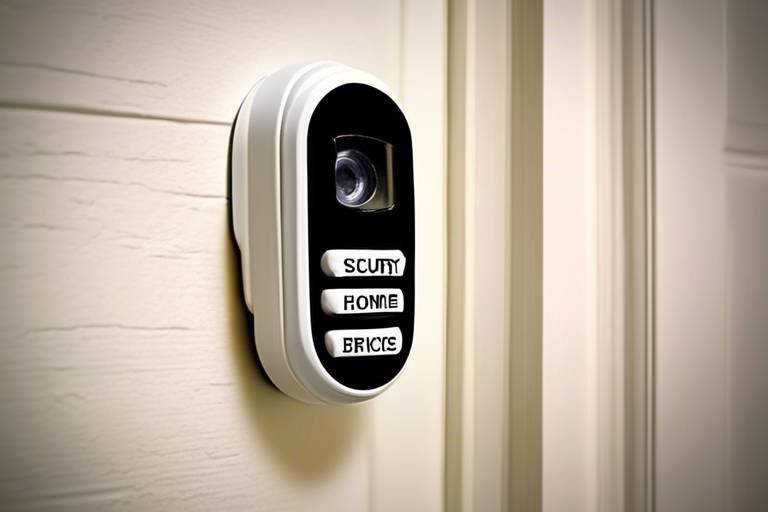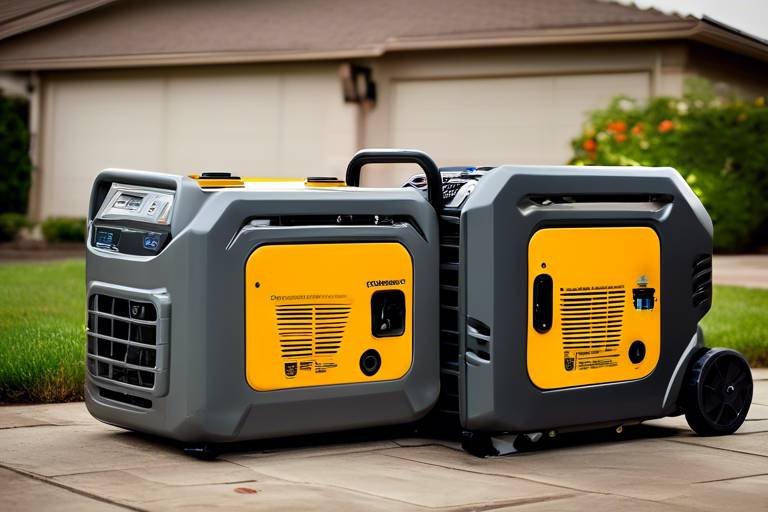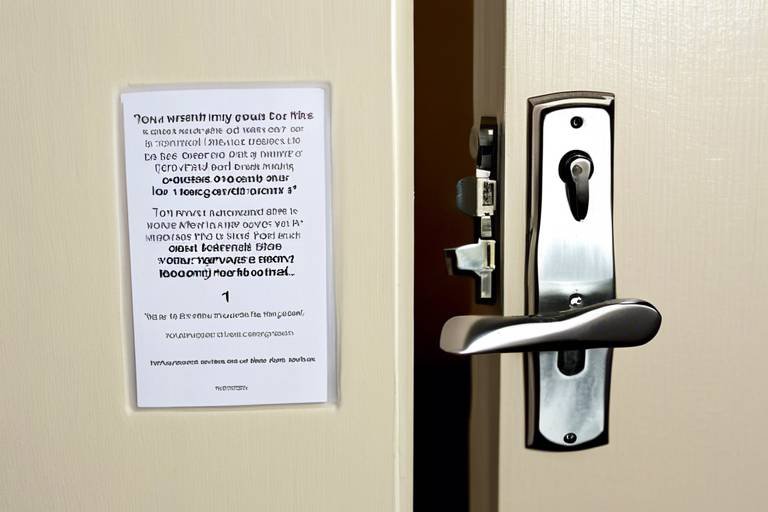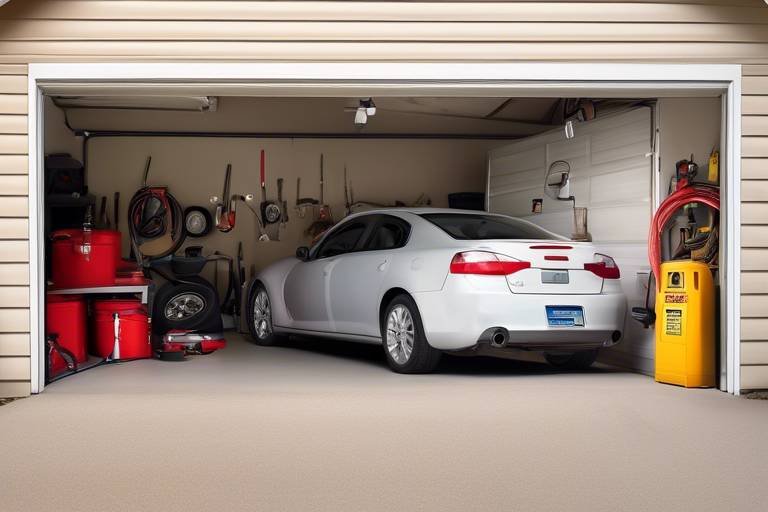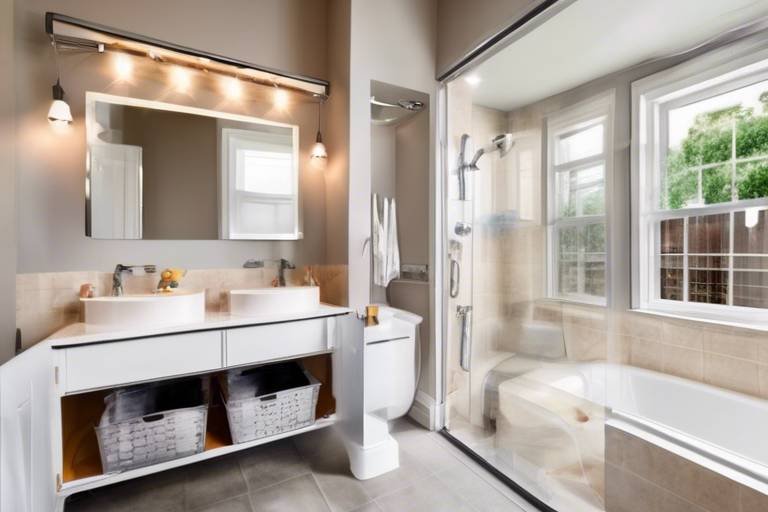Making Your Bathroom Safer for Children
Creating a safe environment in your bathroom is essential, especially when it comes to children. Bathrooms can be a playground of potential hazards, from slippery floors to hot water taps. As parents, it’s our responsibility to ensure that our little ones can explore their independence without putting themselves at risk. So, how do we make the bathroom a safe haven rather than a danger zone? In this article, we’ll dive into various strategies that not only enhance safety but also promote confidence in your child's daily routines.
First things first, let’s talk about the common hazards lurking in your bathroom. Understanding these risks is crucial for effective child safety measures. The bathroom can be a slippery place, especially when little feet encounter water on the floor. Slips and falls are among the top concerns. Additionally, there’s the risk of burns from hot water and the potential danger of toxic substances found under the sink or in cabinets. By identifying these hazards, you can take proactive steps to mitigate them, ensuring that your bathroom is a safe space for your children.
One of the simplest yet most effective ways to prevent falls in the bathroom is by installing non-slip mats. These mats provide traction, reducing the risk of slipping on wet surfaces. When choosing a mat, consider the various types available. You can find rubber mats that grip the floor well, vinyl mats that are easy to clean, or fabric options that add a touch of comfort. Each material has its pros and cons, so selecting the right one depends on your specific needs.
Let’s break down the materials. Rubber mats are fantastic for their gripping ability, making them ideal for wet areas. However, they can be a bit challenging to clean. Vinyl mats, on the other hand, are easy to maintain but might not provide as much traction. Fabric mats are soft and comfortable but can become slippery when wet. It’s essential to weigh these factors when making your choice. A good balance of safety and comfort will ensure your child can navigate the bathroom without fear.
To keep your non-slip mats effective, regular maintenance is key. Make sure to wash them frequently to prevent mold and mildew buildup. A simple solution of warm water and mild detergent can do wonders. Also, check for any wear and tear; if a mat starts to lose its grip, it’s time for a replacement. Keeping your mats in good condition is vital for maintaining a safe environment.
Placement is just as important as the type of mat you choose. Strategically position mats in high-risk areas like outside the shower or bathtub, and near the sink. This way, you create a safer zone where your child can move around without the fear of slipping. Consider using multiple mats to cover larger areas, ensuring comprehensive safety throughout the bathroom.
Another crucial safety measure is installing faucet covers. These nifty devices can prevent burns and injuries by acting as a barrier between your child and the hot water tap. There are various types of faucet covers available, some designed to fit snugly over the faucet while others are cushioned to absorb impact. By using these covers, you not only protect your child from burns but also give yourself peace of mind when they are exploring the bathroom.
Bathroom cabinets often house hazardous items like cleaning supplies, medications, and sharp objects. Therefore, securing these cabinets is essential. Start by investing in effective locks that are difficult for children to open but easy for adults. There are numerous locking mechanisms available, from simple sliding locks to more complex childproof latches. Choosing the right lock can significantly enhance safety in your bathroom.
When selecting locks for your bathroom cabinets, consider the ease of use for adults versus the complexity for children. Look for locks that can be operated with one hand but require a bit of dexterity that kids won’t possess. This way, you can access your supplies quickly while keeping them out of reach from curious little hands.
Proper organization of bathroom supplies can minimize risks as well. Store hazardous items on high shelves or in locked cabinets, while keeping child-friendly items within easy reach. This not only helps keep your bathroom safe but also encourages children to take responsibility for their own hygiene routines. By making safe items accessible, you empower them to start developing their independence.
Teaching children about bathroom safety is just as crucial as implementing physical safety measures. Start by explaining the potential dangers in a way they can understand. Use simple language and relatable analogies to make the information stick. For instance, you could compare the slippery floor to an ice rink, making it clear that they need to be careful.
Establishing a safety routine can help children remember important practices. Create a checklist of safety steps they should follow before using the bathroom, such as checking the floor for water or testing the water temperature with their wrist. Consistency is key; repeating these steps will help them internalize safety habits.
Visual aids can reinforce safety messages effectively. Consider creating colorful charts or pictures that outline bathroom safety rules. Hang these visuals at eye level so children can easily see them. This not only makes learning fun but also serves as a constant reminder of the safety practices they should follow.
Monitoring water temperature is crucial to prevent burns. A simple way to do this is by setting your water heater to a safe temperature, ideally around 120°F (49°C). Additionally, using bath thermometers can help ensure that the water is at a comfortable level before your child gets in. A quick test with their wrist can also be a good practice for them to learn.
For an added layer of protection, consider installing anti-scald devices. These devices regulate the water temperature, preventing it from getting too hot. They are relatively easy to install and can provide peace of mind, especially for parents of younger children who may not be able to communicate discomfort effectively.
Educating children on safe bathing practices is vital for their independence. Teach them how to test the water temperature before getting in and remind them to sit down while bathing to avoid slips. By instilling these habits early on, you’re setting them up for a lifetime of safe bathing experiences.
A safe bathing environment enhances the overall experience for children. Start by optimizing the layout of your bathroom; ensure that everything they need is within reach yet safely stored. This includes choosing safe bath toys that won’t pose choking hazards or contain harmful materials. Always avoid toys with small parts or those that can trap water, leading to mold growth.
When selecting bath toys, prioritize safety. Look for toys made from non-toxic materials, and ensure they are easy to clean. Avoid toys with small parts that can be a choking hazard. By choosing safe options, you can make bath time enjoyable without compromising on safety.
Finally, consider installing shower mats and grab bars. Shower mats provide extra grip, while grab bars offer support for children getting in and out of the tub. Both are simple additions that can significantly improve safety and confidence during bath time. Make sure to install grab bars securely, following the manufacturer’s instructions for safety.
- What are the most common bathroom hazards for children? Slips, burns, and access to toxic substances are the most common hazards.
- How can I make my bathroom safer? Install non-slip mats, secure hazardous items in cabinets, and educate your children about safety practices.
- Are anti-scald devices necessary? Yes, they provide an essential layer of protection against burns, especially for young children.
- What should I look for in bath toys? Choose non-toxic, easy-to-clean toys without small parts to ensure safety during bath time.
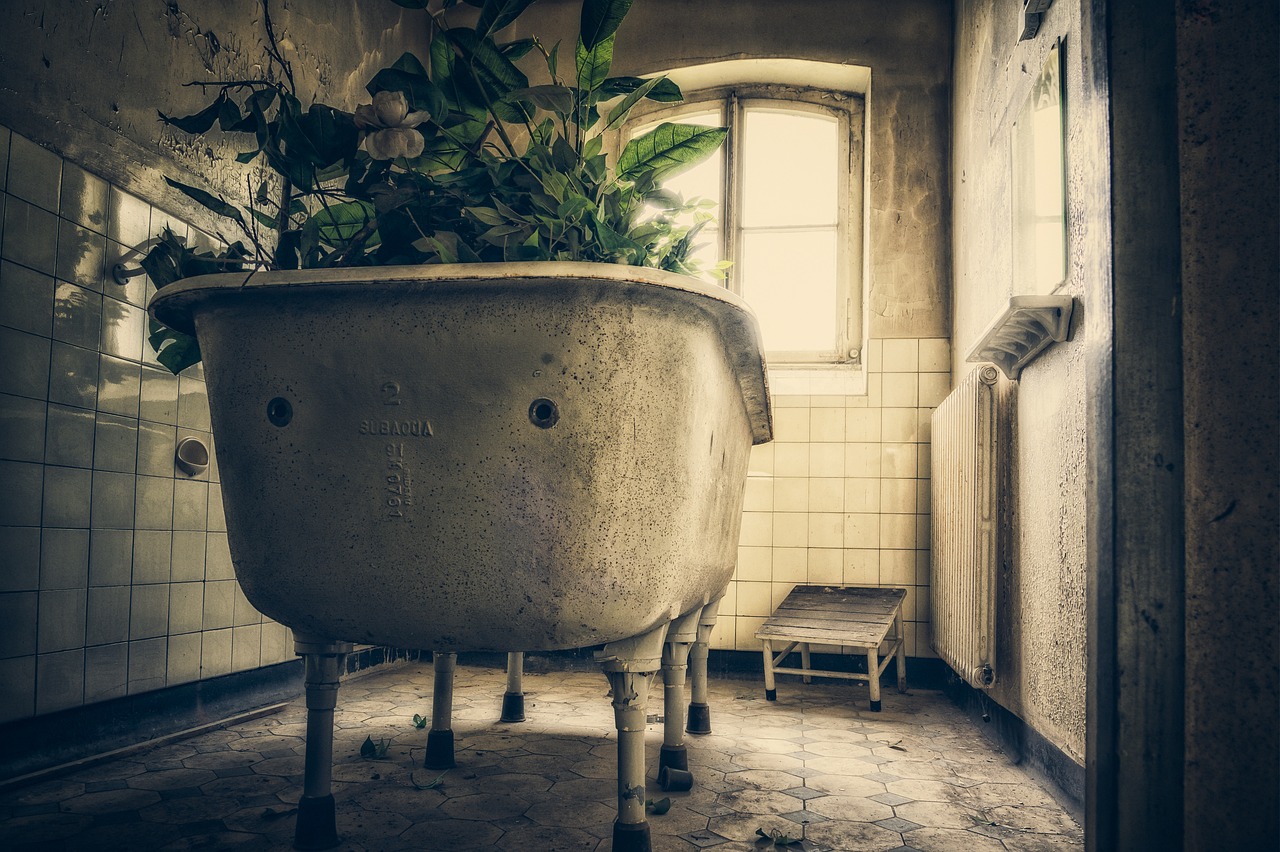
Understanding Common Bathroom Hazards
When it comes to keeping our little ones safe, the bathroom can often be a hidden minefield of dangers. It's a space that, while essential for daily hygiene, is fraught with risks that can easily go unnoticed. Understanding these common hazards is the first step in ensuring a secure environment for children. From slippery floors to hot water, parents need to be vigilant about the potential threats lurking in this otherwise mundane room.
One of the most significant hazards in the bathroom is slips and falls. The combination of water on the floor and the slick surfaces of bathtubs and tiles can create a slippery situation that even the most careful adult might struggle with. Children, with their boundless energy and tendency to rush, are particularly vulnerable. It's crucial to recognize that even a moment's distraction can lead to a serious accident.
Another critical concern is burns. Hot water can cause severe injuries in mere seconds. Many parents may not realize that the temperature of bathwater can quickly escalate to dangerous levels, especially if the water heater is set too high. That's why monitoring the water temperature is vital, as children often do not have the instinct to test the heat before jumping in.
Moreover, we can't overlook the presence of toxic substances in the bathroom. Many common household items, such as cleaning products, medications, and personal care items, can pose serious health risks if ingested or improperly handled. It's essential to store these items out of reach or in locked cabinets to prevent curious little hands from getting into trouble.
In addition to these hazards, another area of concern is the sharp edges of bathroom fixtures and furniture. Items like sink corners, bathtub edges, and even toilet lids can pose a risk for bumps and bruises. All these factors combined create a perfect storm of potential accidents, making it imperative for parents to take proactive measures to childproof their bathrooms.
To summarize, here are the primary hazards to keep an eye on:
- Slips and falls due to wet surfaces
- Burns from hot water
- Toxic substances from cleaning supplies and medications
- Sharp edges on fixtures and furniture
By being aware of these common bathroom hazards, parents can take the necessary steps to mitigate risks and create a safer environment for their children. Remember, safety in the bathroom is not just about preventing accidents; it’s about fostering a sense of independence and confidence in our little ones as they navigate their daily routines.
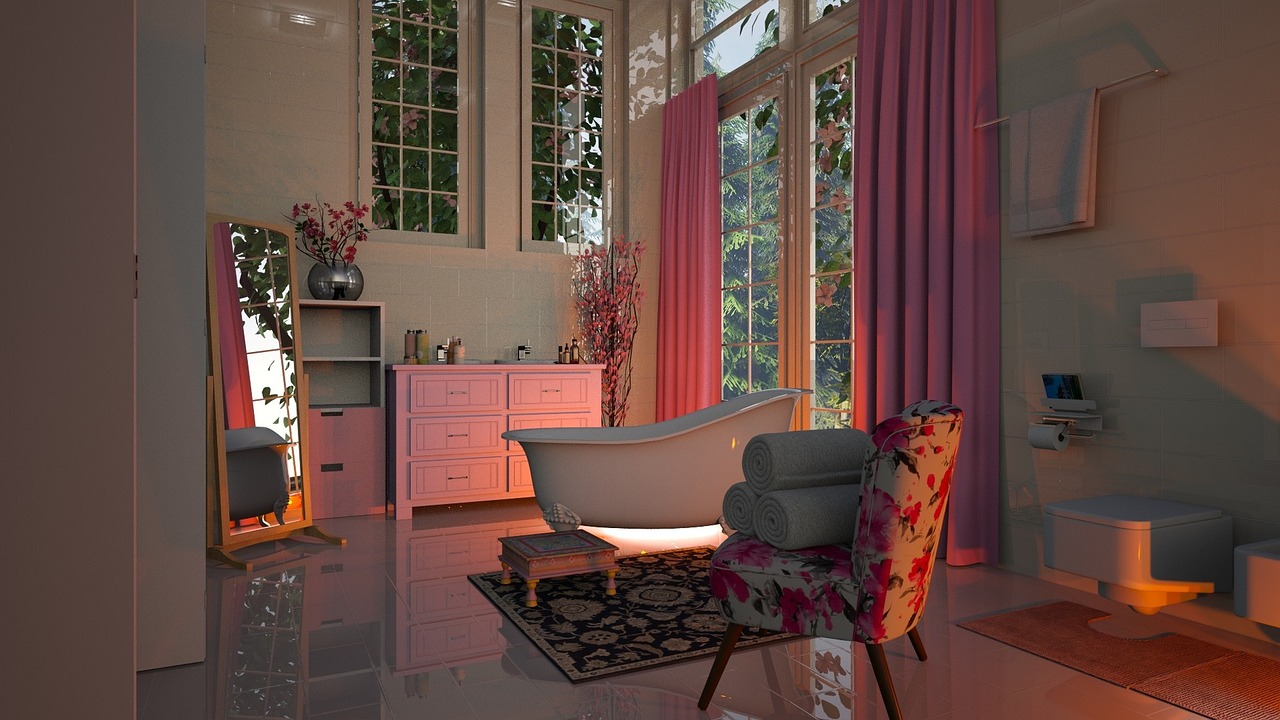
Installing Non-Slip Mats
When it comes to making your bathroom safe for children, is one of the most effective strategies. These mats not only provide a layer of protection against slips and falls but also empower your little ones to explore their independence in a safe environment. Imagine your child stepping out of the bath, all giggles and splashes, and then suddenly losing their footing on a wet tile floor. It’s a scenario no parent wants to witness. By incorporating non-slip mats, you can significantly reduce the chances of such accidents.
There are several types of non-slip mats available on the market, each designed to cater to different needs and preferences. When selecting a mat, consider the material, size, and design. For instance, rubber mats tend to offer excellent grip and durability, while vinyl mats can be easier to clean and maintain. Fabric mats, on the other hand, may provide a softer feel but could require more frequent washing to keep them hygienic. Here’s a quick comparison:
| Material | Grip Level | Comfort | Maintenance |
|---|---|---|---|
| Rubber | High | Moderate | Easy |
| Vinyl | Moderate | High | Very Easy |
| Fabric | Low | Very High | Moderate |
Once you’ve chosen the right mat, placement is key. Consider positioning the mat in areas that are most prone to water exposure, such as directly outside the shower or bathtub. This strategic placement will maximize its effectiveness in preventing slips. Additionally, overlapping mats can provide extra coverage in high-traffic areas where kids might rush after bath time. Remember, a mat is only effective if it stays in place, so look for options with strong suction cups or adhesive backing to keep them anchored to the floor.
To ensure your non-slip mats remain effective and safe over time, regular maintenance is essential. Here are a few tips to keep in mind:
- Wash regularly: Cleaning your mats weekly can prevent mold and mildew buildup, which can create an entirely new hazard.
- Inspect for wear: Check for any signs of wear and tear, such as cracks or fading, which can compromise their grip.
- Dry thoroughly: After cleaning, make sure to dry the mats completely before placing them back in the bathroom to avoid slipping hazards.
In conclusion, installing non-slip mats is a simple yet highly effective way to enhance bathroom safety for children. By choosing the right materials, placing them strategically, and maintaining them properly, you can create a safer environment that allows your kids to enjoy their time in the bathroom without the worry of slips and falls.

Choosing the Right Material
When it comes to enhancing safety in your bathroom, the choice of non-slip mats is pivotal. You might be wondering, "What materials should I consider?" Well, let's dive into the three most common options: rubber, vinyl, and fabric. Each material has its own unique set of features that cater to different needs, so understanding these can help you make an informed decision.
Rubber mats are often hailed as the champions of grip. Their textured surface provides excellent traction, making them an ideal choice for wet environments. Additionally, rubber mats are durable and resistant to mold and mildew, which is a huge plus in the humid bathroom atmosphere. However, one downside is that they can sometimes have a strong odor when new, which may take time to dissipate.
On the other hand, vinyl mats offer a more versatile option. They come in a variety of designs and colors, allowing you to match your bathroom's aesthetic. While they may not provide the same level of grip as rubber, many vinyl mats are treated to enhance slip resistance. They're also easy to clean, which is a significant advantage for busy parents.
Finally, fabric mats can add a touch of comfort and warmth to your bathroom. These mats are often plush and inviting, making them great for stepping out of the shower. However, they can absorb water and may require more frequent washing to prevent mold growth. When choosing a fabric mat, look for options with a non-slip backing to enhance safety.
To help you visualize the differences, here's a quick comparison table:
| Material | Grip | Durability | Design Variety | Maintenance |
|---|---|---|---|---|
| Rubber | Excellent | High | Limited | Easy |
| Vinyl | Good | Medium | High | Very Easy |
| Fabric | Moderate | Low | Medium | Moderate |
In summary, the right material for your non-slip mats will depend on your specific needs and preferences. If ultimate grip is your priority, rubber might be your best bet. If you’re looking for aesthetics and easy maintenance, vinyl could be the way to go. And if comfort is your main concern, a fabric mat with non-slip backing might be ideal. Whatever you choose, ensuring that your bathroom is a safe space for your children is the ultimate goal!
Q: How often should I replace my non-slip mats?
A: It's recommended to replace them every 1-2 years, or sooner if they show signs of wear and tear.
Q: Can I wash my non-slip mats?
A: Yes, most non-slip mats can be washed. Check the manufacturer's instructions for specific care guidelines.
Q: Are there any non-slip mats that are eco-friendly?
A: Yes, many brands offer eco-friendly options made from recycled materials or natural rubber.

Maintenance Tips for Longevity
Maintaining your non-slip mats is essential for ensuring their effectiveness and longevity. After all, these mats are your first line of defense against slips and falls in a wet bathroom environment. Regular care not only keeps them looking good but also enhances their grip and safety features. So, how do you keep your mats in top shape? Here are some simple yet effective tips:
First and foremost, regular cleaning is key. Depending on the material of your non-slip mat, you should clean it at least once a week. For rubber mats, a simple rinse with warm water and a mild detergent will do the trick. If you have fabric mats, consider machine washing them according to the manufacturer's instructions. This not only removes dirt and grime but also helps in eliminating any mildew that could develop in damp conditions.
Next, always check for wear and tear. Over time, even the best mats can show signs of aging. Look for cracks, peeling, or any loss of grip. If you notice these issues, it might be time to replace your mats. After all, a worn-out mat can be just as dangerous as having no mat at all!
Additionally, drying your mats properly is crucial. After cleaning, ensure that your mats are thoroughly dried before placing them back in the bathroom. This simple step can prevent mold and mildew growth, which can compromise both the appearance and safety of your mats. If possible, hang them outside in the sun for a natural drying effect, as sunlight can also help kill any lingering bacteria.
Finally, consider the placement of your mats. Mats should be positioned in high-traffic areas, such as in front of the sink and shower. However, be mindful of the edges—if they curl up, they can become tripping hazards. Regularly check that your mats are lying flat and securely in place. If necessary, use double-sided tape to keep them from shifting.
By following these maintenance tips, you can ensure that your non-slip mats remain effective and safe for your children. Remember, a little care goes a long way in creating a secure bathroom environment!
1. How often should I clean my non-slip mats?
It's recommended to clean them at least once a week to keep them free from dirt and mildew.
2. What should I do if my mat shows signs of wear?
If you notice cracks or peeling, it's best to replace the mat to ensure safety.
3. Can I machine wash my fabric non-slip mats?
Yes, but always follow the manufacturer's instructions for the best results.
4. How can I prevent mold on my mats?
Make sure to dry them thoroughly after cleaning and store them in a well-ventilated area.
5. What type of non-slip mat is best for my bathroom?
Rubber mats generally provide the best grip, but consider your specific needs and preferences when choosing.
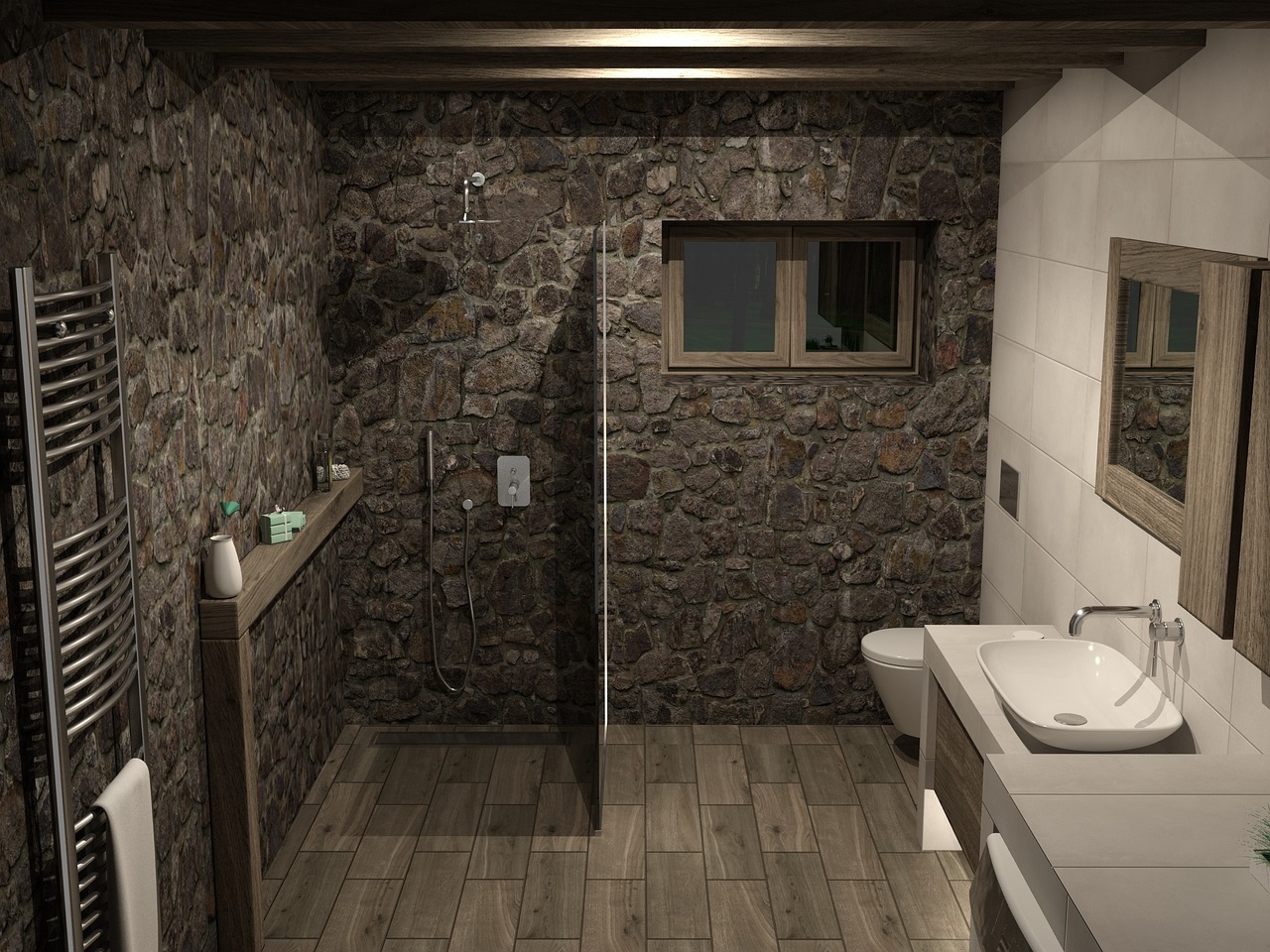
Placement and Coverage
When it comes to enhancing safety in your bathroom, the placement and coverage of non-slip mats can make a world of difference. Think of your bathroom as a stage where every detail matters; the right positioning of mats can prevent slips and falls, ensuring your little ones can navigate this space confidently. Start by evaluating high-risk areas such as the floor around the bathtub, shower, and sink. These zones are often wet and slippery, making them prime spots for accidents.
To maximize safety, consider the following placement strategies:
- Bathtub Area: Place a non-slip mat both inside and outside the bathtub. This dual approach provides traction when entering and exiting the tub, reducing the risk of falls.
- Shower Floor: A mat in the shower can significantly reduce slipping, especially if your shower has a smooth surface. Ensure the mat adheres well to the floor to avoid it shifting during use.
- Near the Sink: Children often rush to wash their hands, and a mat in front of the sink can catch any splashes and provide grip when they step back.
In addition to strategic placement, consider the coverage area of your mats. A mat that is too small may not cover enough ground to be effective. Ideally, choose mats that extend beyond the immediate wet areas to provide a larger safety zone. For instance, a mat that stretches from the bathtub to the floor can help catch any water that drips off, preventing it from creating a slippery hazard.
Another factor to consider is the design of your bathroom. If you have a larger space, you might need multiple mats to ensure comprehensive coverage. Visualize your bathroom layout and identify all potential hazard zones. A well-thought-out mat placement not only enhances safety but also contributes to a visually appealing bathroom design.
Finally, don’t forget about the maintenance of your mats. Regularly check for wear and tear, and make sure they’re clean and free of mold or mildew. A dirty or worn mat can lose its grip, making it less effective. By ensuring your non-slip mats are well-placed and maintained, you create a safer environment for your children to explore and enjoy.
Q1: How often should I replace non-slip mats?
A1: It's advisable to replace non-slip mats every 1-2 years or sooner if you notice signs of wear, such as fraying edges or loss of grip.
Q2: Can I use regular bath mats instead of non-slip mats?
A2: Regular bath mats may not provide the grip needed to prevent slips. It's best to invest in mats specifically designed for wet areas.
Q3: What should I do if my mat slips around?
A3: Ensure the mat has a non-slip backing. If it still moves, consider using double-sided tape or adhesive strips designed for bathroom use.
Q4: Are there any specific materials I should look for in non-slip mats?
A4: Look for mats made of rubber or vinyl, as these materials offer excellent grip and are easy to clean.
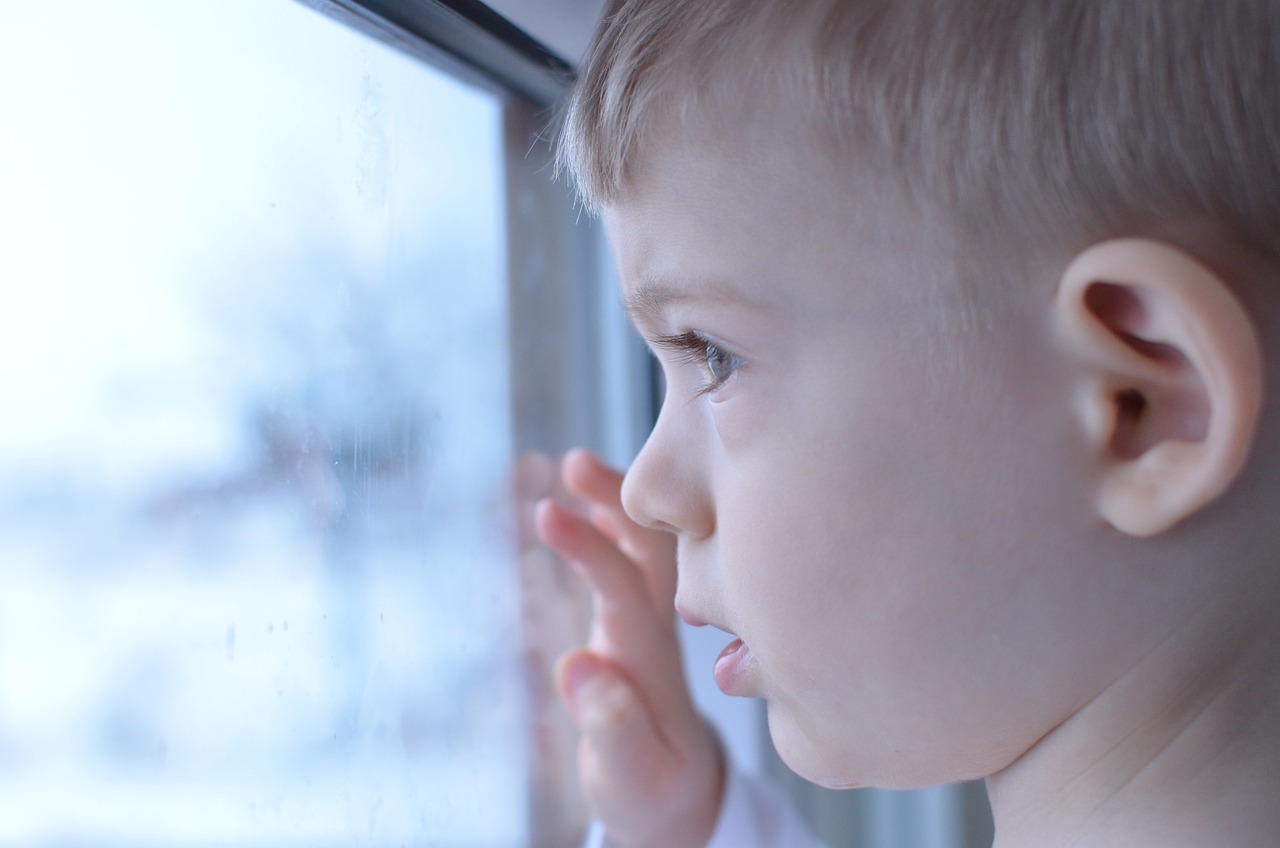
Using Faucet Covers
When it comes to keeping your little ones safe in the bathroom, faucet covers are an invaluable tool. These clever devices not only protect children from the sharp edges of faucets but also act as a barrier against hot water, significantly reducing the risk of burns. Imagine your child reaching up to turn on the tap, only to be met with a soft, cushioned cover instead of a hard metal surface. It's a small change that can make a huge difference in safety.
There are various types of faucet covers available on the market, each designed with different features and benefits. For instance, some faucet covers are made of soft rubber, while others might be constructed from durable plastic. The choice you make can depend on factors such as your child's age, the size of your faucet, and personal preference. Choosing the right cover can ensure that it fits snugly and securely, providing the ultimate protection for your child.
When selecting a faucet cover, consider the following key aspects:
- Material: Look for covers made from non-toxic, durable materials that can withstand daily use.
- Size: Ensure the cover fits your faucet perfectly; a loose cover may not provide adequate protection.
- Design: Some covers come with fun designs or colors that can make bath time more enjoyable for kids.
Additionally, the installation of faucet covers is typically straightforward. Most covers simply slide over the faucet and can be secured with a strap or adhesive, depending on the model. This means that even if you’re not particularly handy, you can have peace of mind knowing your child is safer in the bathroom in just a few minutes. Remember to check the cover regularly to ensure it remains secure and in good condition. If it shows signs of wear and tear, it’s time to replace it.
Incorporating faucet covers into your bathroom safety plan is a proactive step towards creating a secure environment for your children. By making these simple adjustments, you not only protect your child from potential accidents but also foster their independence as they learn to navigate their bathing routine with confidence. So, why wait? Start exploring the different options available and take that essential step towards a safer bathroom today!
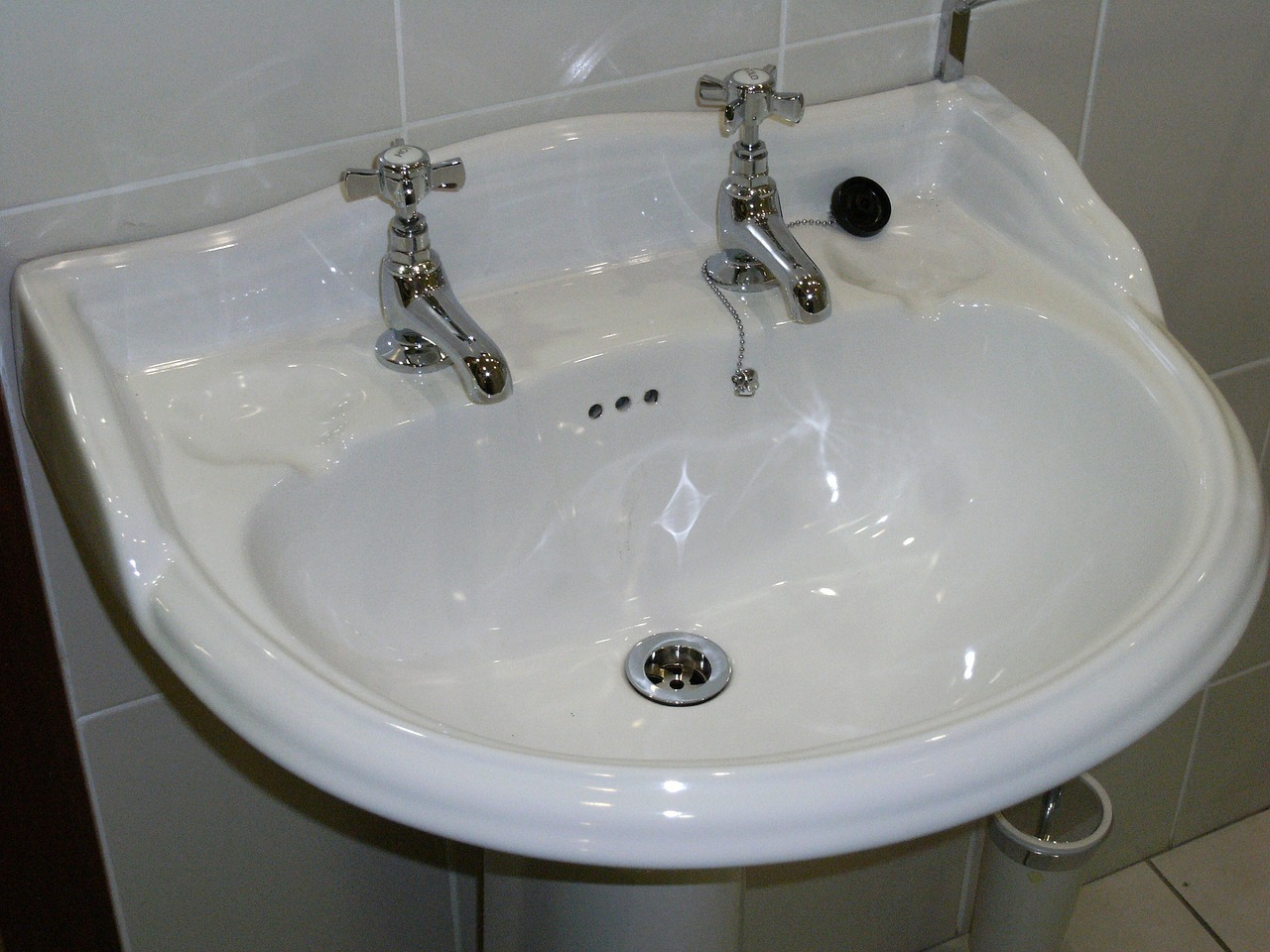
Childproofing Bathroom Cabinets
When it comes to keeping our little ones safe, childproofing the bathroom is a must, and one of the most critical areas to focus on is the bathroom cabinets. These cabinets often house a treasure trove of hazardous items, from cleaning supplies to medications, which can pose significant risks if accessed by curious hands. By taking proactive steps to secure these cabinets, you can create a safer environment for your children, allowing them to explore their surroundings with confidence.
First and foremost, it’s essential to understand the types of items typically stored in bathroom cabinets that can be dangerous for children. Common items include:
- Cleaning Products: Many cleaning agents contain harmful chemicals that can cause poisoning or skin irritation.
- Medications: Prescription and over-the-counter medications can be extremely harmful if ingested by children.
- Sharp Objects: Items like razors or scissors can lead to cuts or injuries if not properly stored.
To effectively childproof your bathroom cabinets, consider the following strategies:
One of the most effective ways to secure bathroom cabinets is by installing childproof locks. There are various types of locking mechanisms available, including:
| Lock Type | Pros | Cons |
|---|---|---|
| Magnetic Locks | Invisible from the outside; easy for adults to open | Requires a special key; may be costly |
| Sliding Locks | Simple installation; affordable | Can be cumbersome for adults |
| Latch Locks | Easy to install and use | May be accessible to older children |
Each type of lock has its advantages and disadvantages, so it’s essential to choose one that best fits your family’s needs. Remember, the goal is to prevent your child from accessing potentially dangerous items while still allowing adults easy access.
Another critical aspect of childproofing is the organization of bathroom supplies. Keeping hazardous items out of reach is vital, but it’s equally important to ensure that safe items are easily accessible for your children. Here are a few tips:
- Store all cleaning products and medications on high shelves or in locked cabinets.
- Use clear containers for safe items, so children can see what’s inside, making it easier for them to ask for help when needed.
- Regularly check the contents of your cabinets to ensure no harmful items are left within reach.
By taking these steps to childproof your bathroom cabinets, you not only enhance safety but also promote a sense of independence in your children. They’ll learn to navigate their environment with care while knowing their safety is a top priority. Remember, childproofing is an ongoing process; regularly reassess your safety measures as your child grows and their abilities change.
Q: What should I store in my bathroom cabinets?
A: Store cleaning products, medications, and sharp objects in locked cabinets, and keep safe items like towels and toiletries accessible for children.
Q: How can I teach my child about bathroom safety?
A: Educate your child about the dangers in the bathroom and establish rules, such as never opening cabinets without an adult.
Q: Are there any specific products recommended for childproofing?
A: Yes, consider using magnetic locks, sliding locks, and latch locks to secure cabinets effectively.
Q: How often should I check my bathroom for safety?
A: Regularly check your bathroom safety measures, especially as your child grows and their capabilities change.
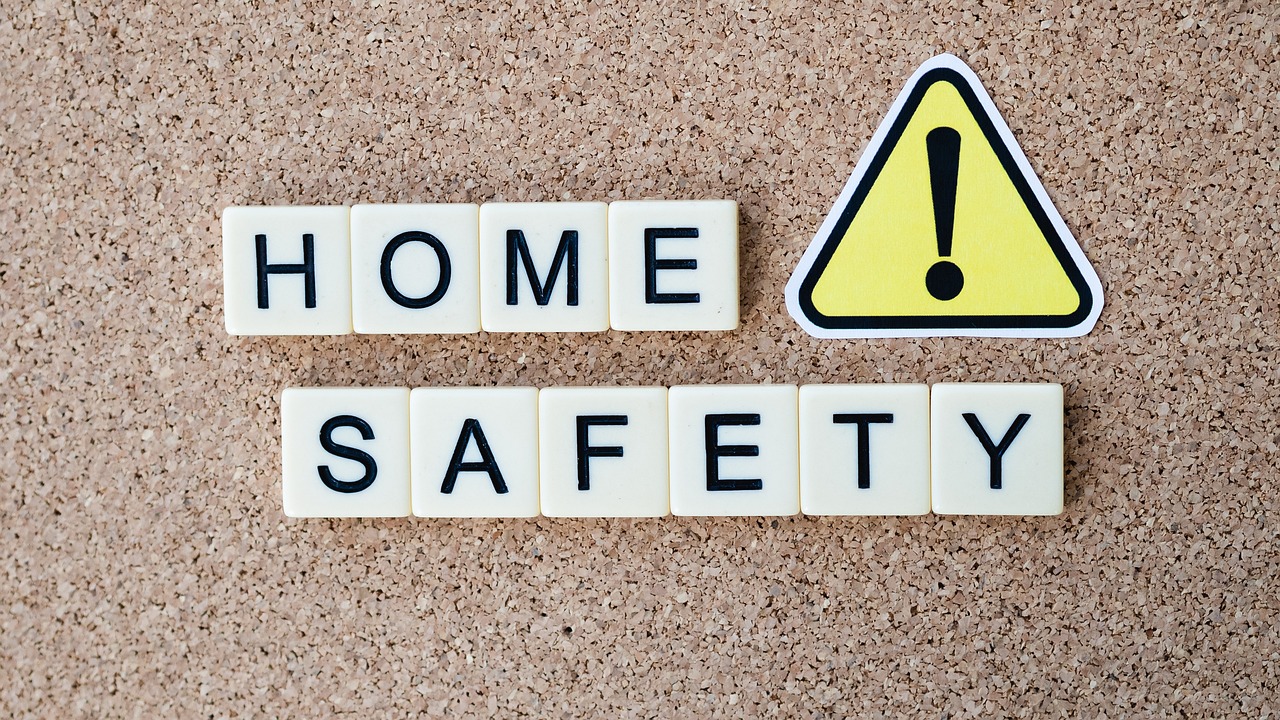
Choosing Effective Locks
When it comes to childproofing your bathroom, one of the most critical steps is selecting effective locks for your cabinets. These locks not only prevent children from accessing hazardous substances but also provide peace of mind for parents. With a variety of locking mechanisms available, it’s essential to choose locks that are both secure and user-friendly for adults. So, what should you look for when selecting locks for your bathroom cabinets?
First, consider the type of lock. There are several options on the market, including:
- Slide locks: These are simple to install and require minimal effort to use. They slide into place, securing the cabinet doors effectively.
- Magnetic locks: These locks are great for keeping cabinets secure while allowing adults easy access with a special key. They are often hidden from view, making them an excellent choice for aesthetic purposes.
- Hook and eye locks: A classic choice that is easy to install and operate. However, they may not be as secure as other options.
Next, think about the installation process. Some locks require drilling or complex installation, while others can be affixed with adhesive strips, making them a breeze to set up. If you’re not particularly handy, opting for a lock that doesn’t require tools can save you time and frustration.
It's also important to consider the age of your children. Younger children may not have the strength or dexterity to operate more complex locks, while older children might be able to figure them out. Therefore, choosing a locking mechanism that is challenging enough for your little ones but still accessible for adults is crucial.
Another factor to keep in mind is the material of the lock. Locks made from durable materials like stainless steel or heavy-duty plastic are more resistant to wear and tear, ensuring they last longer. Investing in quality locks can save you money in the long run by reducing the need for replacements.
Finally, consider the design of the lock. While functionality is key, you don’t want your bathroom to look like a fortress. Many modern locks come in sleek designs that blend seamlessly with your existing decor. This way, you can maintain a stylish bathroom while ensuring safety for your children.
In summary, when choosing effective locks for your bathroom cabinets, prioritize security, ease of use, installation method, durability, and design. Taking the time to select the right locks can significantly enhance the safety of your bathroom and provide a secure environment for your children to explore and grow.
Q: What are the best types of locks for bathroom cabinets?
A: The best types of locks include magnetic locks for their hidden security, slide locks for ease of use, and hook and eye locks for simplicity. Choose based on your children's ages and your installation preferences.
Q: How do I install child safety locks?
A: Installation methods vary by lock type. Some require screws, while others can be attached with adhesive. Always follow the manufacturer’s instructions for the best results.
Q: Are child safety locks effective?
A: Yes! When installed correctly, child safety locks can significantly reduce the risk of children accessing dangerous items in the bathroom.
Q: Can older children open child safety locks?
A: Some older children may be able to figure out how to open certain types of locks. It’s important to choose locks that are challenging enough for their age group.
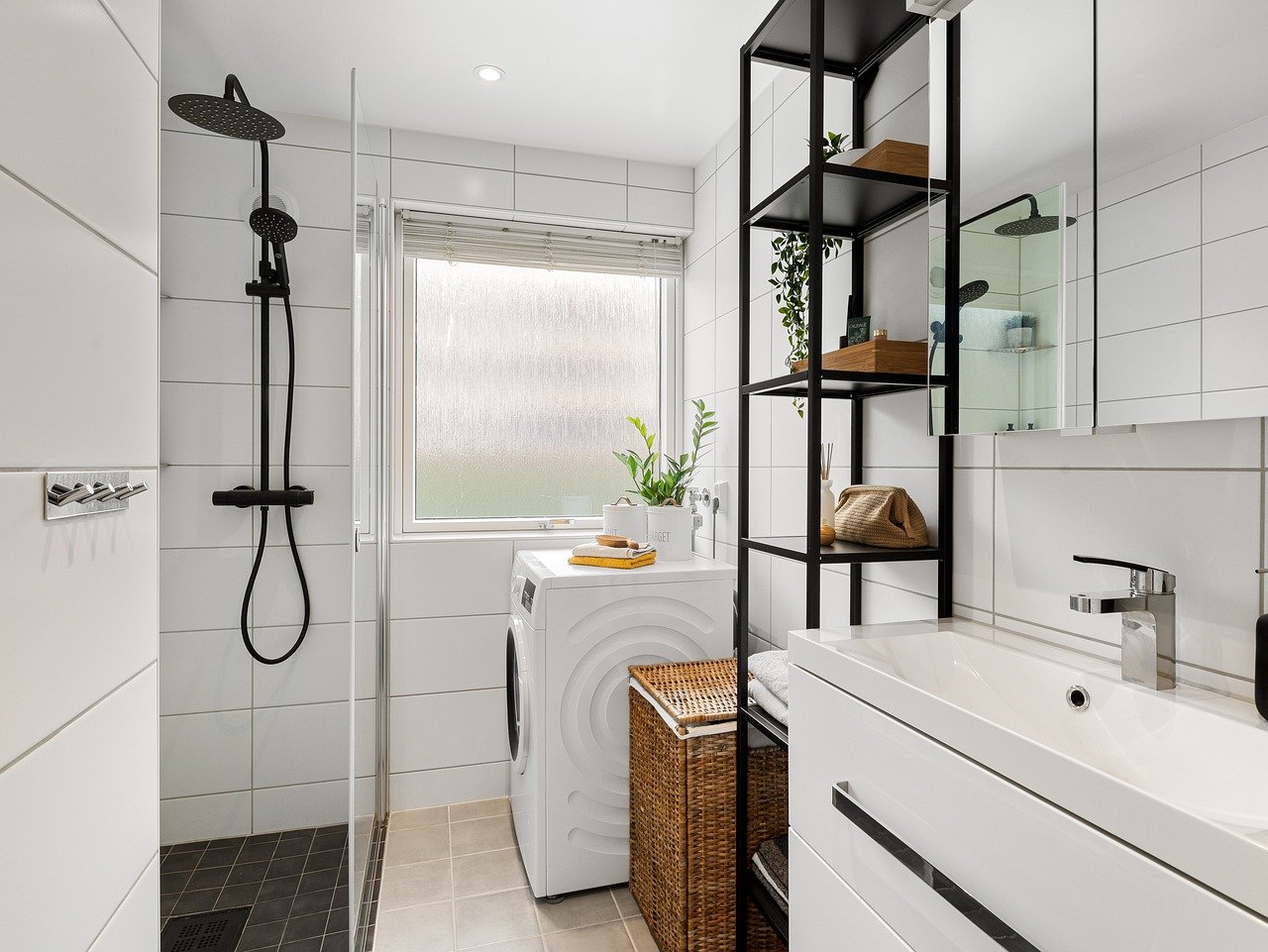
Organizing Bathroom Supplies
When it comes to creating a safe environment for children in the bathroom, organization is key. A well-organized bathroom not only minimizes risks but also makes it easier for kids to find what they need without rummaging through potentially hazardous items. Start by assessing the supplies you have and categorizing them into groups. For instance, you might have toiletries, cleaning products, and medications. Each of these categories should be stored in a way that is both accessible to adults and out of reach for little hands.
One effective method for organizing bathroom supplies is to use clear storage bins. These bins allow you to see what's inside without having to open each one, which can save time and reduce clutter. You can label each bin with easy-to-read tags, such as "Shampoos," "Conditioners," or "First Aid." This not only helps you find items quickly but also teaches children about organization and responsibility.
Additionally, consider the height at which you store items. Place everyday items that your child might need, like towels or bath toys, within their reach. However, keep all hazardous materials, such as cleaning supplies and medications, locked away in a cabinet with a secure lock. This ensures that children can access their own items while keeping dangerous substances safely out of reach. Remember, the goal is to create an environment where children can explore and learn while minimizing risks.
Another tip is to regularly review your bathroom supplies. Check for expired products, especially medications, and dispose of them properly. This not only keeps your bathroom organized but also ensures that you are not storing anything that could potentially harm your children. You can also involve your kids in this process, teaching them about the importance of safety and organization.
To summarize, organizing bathroom supplies is about creating a balance between accessibility and safety. By using clear bins, labeling them, and regularly reviewing your items, you can create a space that is both functional and safe for children. Remember, a well-organized bathroom is not just about aesthetics; it's a crucial step in ensuring that your little ones can navigate their bathing routines with confidence and security.
- What should I do if my child gets into cleaning supplies?
Immediately assess the situation and contact poison control if necessary. It's crucial to keep cleaning supplies locked away and out of reach at all times. - How can I teach my child about bathroom safety?
Involve them in discussions about safety, create a routine, and use visual aids to reinforce the lessons. - Are there specific products recommended for childproofing?
Yes, look for childproof locks, anti-scald devices, and non-slip mats that are specifically designed for children's safety.

Educating Children About Bathroom Safety
Teaching children about bathroom safety is not just a good idea; it's a necessity! Imagine your little one feeling like a superhero, confidently navigating their bathroom while knowing the rules to keep themselves safe. The bathroom can be a fun place, but it also has its share of hazards. By educating your children about these dangers, you're empowering them to make safer choices. So, how can you effectively teach your kids about bathroom safety? Let's dive in!
One of the most effective methods is to create a safety routine. Establishing a consistent routine can help children remember the essential safety practices they need to follow every time they enter the bathroom. For instance, you might incorporate steps like:
- Always checking the water temperature before getting in the tub.
- Using a non-slip mat when stepping out of the shower.
- Keeping hazardous items out of reach.
By making these steps a regular part of their bathroom experience, your children will start to internalize these safety habits. You can even turn it into a fun game! For example, you can pretend to be detectives on a mission to find all the potential dangers and discuss how to avoid them.
Another fantastic way to reinforce safety messages is through visual aids. Kids often respond well to colorful charts and pictures that illustrate safety rules. You can create a fun poster that highlights key safety practices, like:
- How to test water temperature with their wrist.
- Where to find the non-slip mats.
- What to do in case of an emergency.
Hang this poster in a prominent spot in the bathroom, where your child can see it every day. This visual reminder will help reinforce the safety messages and keep them fresh in their minds.
Additionally, consider incorporating storytime into your education efforts. There are plenty of children's books available that focus on bathroom safety. Reading these stories together can not only teach your child valuable lessons but also provide a bonding experience. You can discuss the characters' choices and relate them to your child's experiences in the bathroom.
Finally, remember that leading by example is one of the most powerful teaching tools. Show your children how you practice bathroom safety in your daily routine. Whether it’s adjusting the water temperature or using the non-slip mat, let them see you taking these precautions. Children learn a lot from observation, and by modeling safe behavior, you're instilling those values in them.
In summary, educating children about bathroom safety is about making learning fun and engaging. By creating a safety routine, using visual aids, incorporating storytime, and leading by example, you can equip your little ones with the knowledge they need to stay safe. Remember, the goal is to make them feel confident and independent while ensuring they understand the importance of safety in the bathroom!
Q: At what age should I start teaching my child about bathroom safety?
A: It's never too early to start! You can begin teaching basic safety concepts as soon as your child starts using the bathroom independently, usually around ages 3-4.
Q: What are the most important safety rules to teach my child?
A: Focus on rules like checking water temperature, using non-slip mats, and keeping hazardous items out of reach. These are fundamental to ensuring their safety.
Q: How can I make learning about bathroom safety fun for my child?
A: Use games, visual aids, and storytelling to make the learning process enjoyable. Kids love interactive learning, so find creative ways to engage them!

Creating a Safety Routine
Establishing a consistent safety routine in the bathroom is like setting the foundation for a sturdy house; it ensures that children know what to expect and how to behave safely in this often hazardous environment. Just as we teach kids to look both ways before crossing the street, we can instill bathroom safety habits that will serve them well throughout their lives. Imagine this: a child confidently navigating the bathroom, knowing exactly what to do to keep themselves safe. Sounds great, right?
To create an effective safety routine, start by involving your child in the process. This not only makes them feel included but also helps them take ownership of their safety. Begin by discussing the potential dangers in the bathroom, such as slippery floors, hot water, and hazardous substances. Use simple language and relatable comparisons to help them understand these risks. For example, you might say, "The floor can be like an ice rink when it's wet, so we need to be careful!"
Next, establish specific steps that your child can follow every time they enter the bathroom. This might include:
- Checking that the floor is dry before stepping in.
- Testing the water temperature with their wrist before getting in the tub.
- Using a step stool to reach items stored safely out of reach.
- Always asking for help if they're unsure about anything.
Visual aids can be incredibly helpful in reinforcing this routine. Consider creating a colorful chart that outlines the safety steps, complete with pictures that illustrate each action. Hang it at eye level in the bathroom so your child can easily refer to it. This way, they can check off each step as they complete it, making the process fun and engaging.
Moreover, consistency is key. Just like brushing teeth becomes a part of the morning and bedtime routine, bathroom safety should be integrated into daily habits. Set reminders or even create a fun song that incorporates the safety steps to help your child remember them. The more they practice, the more natural these behaviors will become.
Finally, make it a point to review the routine regularly. As children grow and develop new skills, their safety needs may change. Periodically sit down with your child to discuss their progress and any new safety measures that may be necessary. This not only keeps the conversation around safety alive but also empowers them to take charge of their own well-being.
In summary, creating a safety routine in the bathroom is a proactive step towards ensuring your child's safety. By involving them in the process, utilizing visual aids, maintaining consistency, and regularly reviewing their progress, you're setting them up for success. Remember, a little preparation goes a long way in making the bathroom a safe space for your little ones!
Q: How can I make my child more aware of bathroom safety?
A: Engaging them in discussions about potential hazards and involving them in creating a safety routine can significantly enhance their awareness. Use visual aids and practical demonstrations to reinforce these concepts.
Q: What age should I start teaching my child about bathroom safety?
A: It's never too early to start! Even toddlers can begin to learn basic safety rules through play and simple conversations. As they grow, you can introduce more complex safety practices.
Q: Are there any tools that can help with bathroom safety?
A: Yes! Items such as non-slip mats, faucet covers, and anti-scald devices are great tools to enhance safety in the bathroom. Additionally, visual aids like charts can help remind children of safety practices.
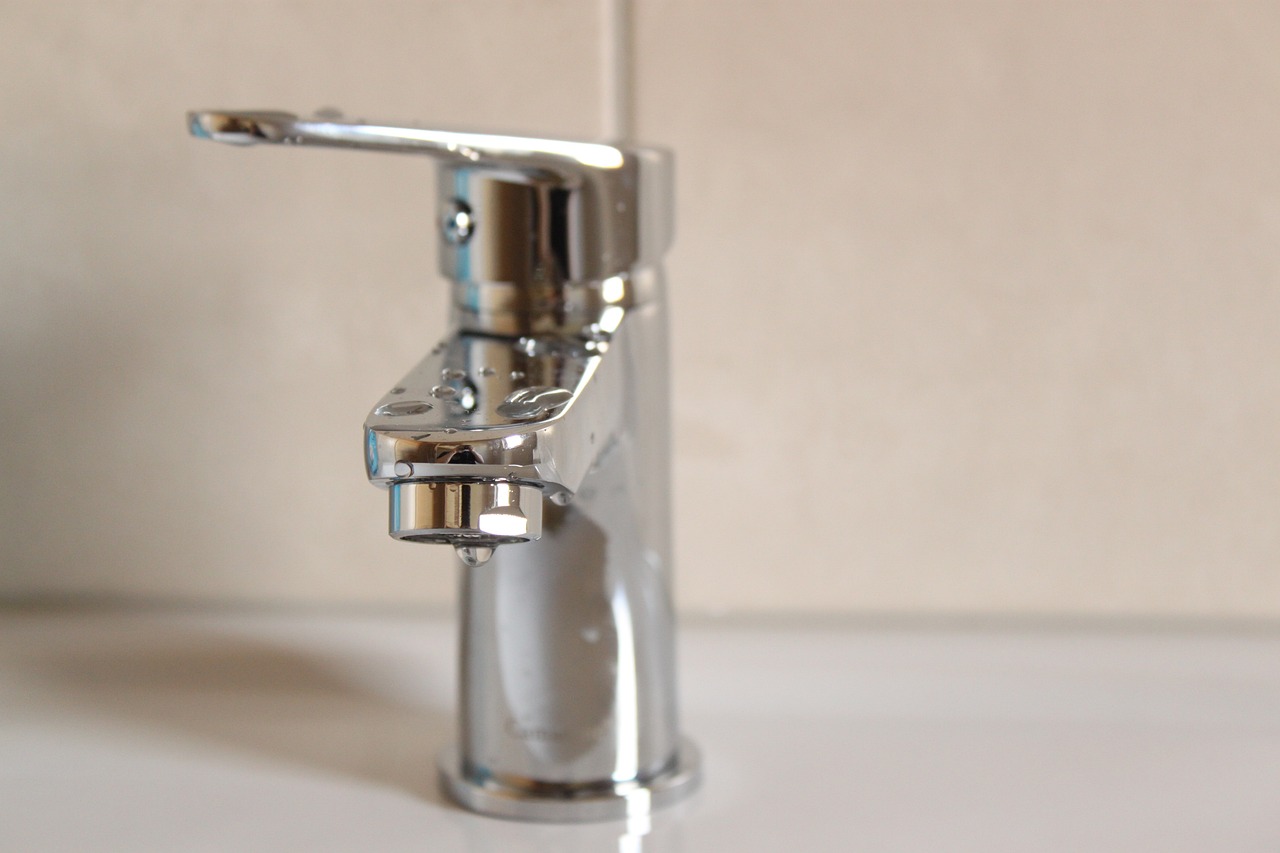
Using Visual Aids
When it comes to teaching children about bathroom safety, visual aids can be incredibly effective. Kids are naturally drawn to images, colors, and shapes, making visual learning a powerful tool. By incorporating charts, pictures, and even fun illustrations, you can create an engaging environment that captures their attention and helps them remember important safety rules. Imagine a colorful chart hanging on the bathroom wall that outlines steps for washing hands or reminders about not running in the bathroom. This not only reinforces the message but also makes it easy for children to recall what they've learned.
One of the best ways to utilize visual aids is by creating a bathroom safety poster. You can include key safety points such as:
- Always test the water temperature before getting in the tub.
- Keep the floor dry to prevent slipping.
- Never play near the toilet.
- Ask an adult for help if something is out of reach.
These simple yet effective reminders can be illustrated with fun characters or bright colors to make them more appealing. You can even involve your child in the creation process—let them help draw or color the poster! This not only makes the learning process fun but also encourages them to take ownership of their safety.
Another great option is using visual cues around the bathroom itself. For instance, consider placing small stickers or decals in strategic locations, such as on the faucet to remind them to turn it off after use or on the floor to indicate where to step carefully. These cues can serve as gentle reminders and will help children associate safety with their everyday routines.
Finally, don’t underestimate the power of storytelling. Create a short story or comic strip featuring a character who learns about bathroom safety. This narrative approach can make the lessons more relatable and memorable. Children often connect with stories, and when they see a character navigating bathroom challenges safely, it reinforces the idea that they can do the same.
In summary, using visual aids is a fantastic way to teach children about bathroom safety. By making the learning process interactive and enjoyable, you not only enhance their understanding but also instill a sense of responsibility for their own safety. So grab those crayons, get creative, and make bathroom safety a fun adventure!
Here are some commonly asked questions regarding bathroom safety for children:
- What age should I start teaching my child about bathroom safety?
It's never too early to start! Introduce basic concepts as soon as they begin using the bathroom independently. - How can I make my child remember safety rules?
Using visual aids, creating routines, and incorporating fun stories can help reinforce safety rules effectively. - Are there specific toys that are safer for bath time?
Yes! Look for toys made from non-toxic materials that are easy to clean and designed specifically for water play.
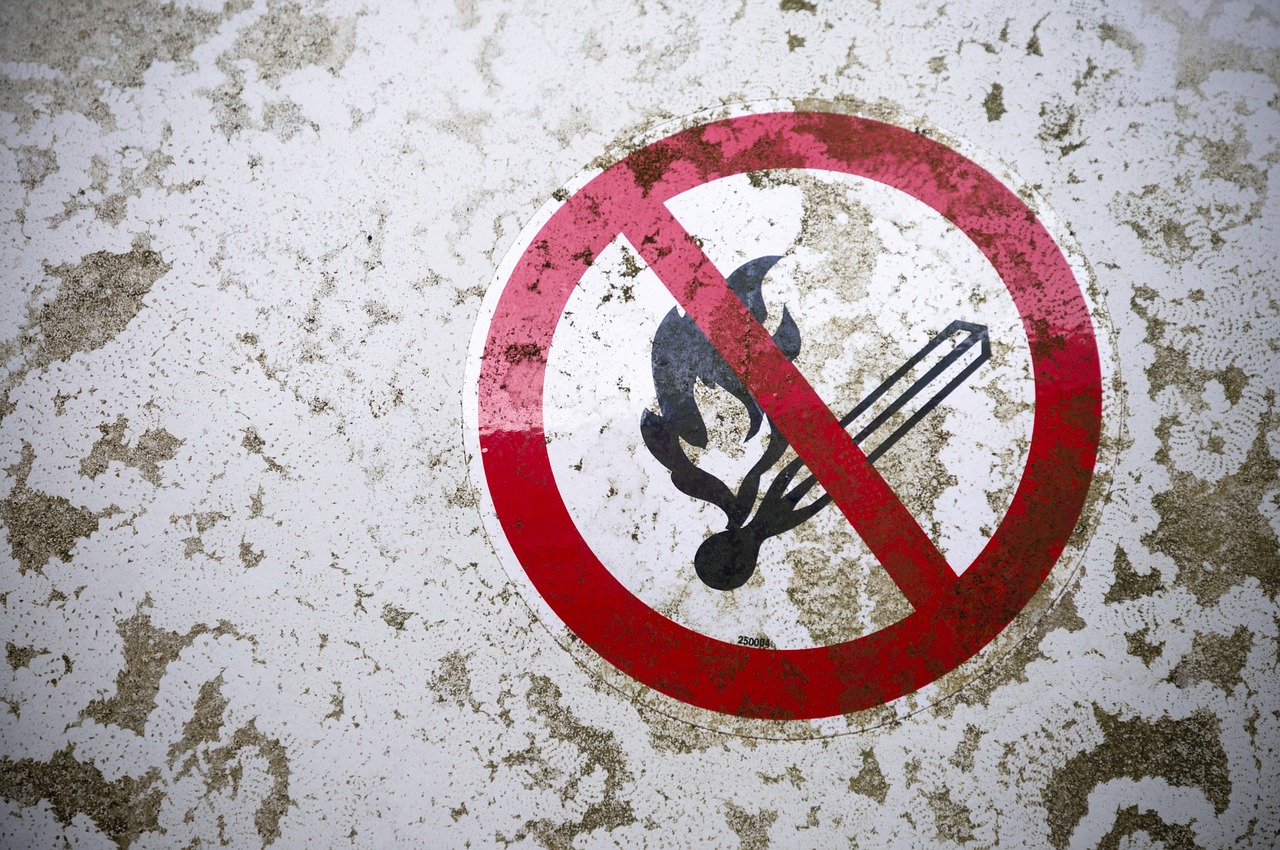
Monitoring Water Temperature
Monitoring water temperature is crucial to prevent burns and ensure a safe bathing experience for children. Did you know that water that feels warm to an adult can be dangerously hot for a little one? The skin of children is more sensitive, making them more susceptible to burns. Therefore, it’s essential to establish safe practices around water temperature before bath time becomes a hazardous affair.
One effective way to maintain a safe bathing environment is to set your water heater temperature to a maximum of 120°F (49°C). This temperature is generally considered safe for children and helps to mitigate the risk of scalding. To ensure you’re not guessing, you can use a thermometer specifically designed for bath water. These thermometers are typically easy to read and can provide peace of mind. You can find a variety of bath thermometers in stores or online, ranging from simple floating devices to digital ones that give precise readings.
In addition to setting the right water heater temperature, installing anti-scald devices can provide an additional layer of protection. These devices are designed to regulate the water temperature and prevent it from exceeding a certain limit, even if the hot water is turned on full blast. They work by mixing cold water into the hot water line, ensuring a steady and safe temperature during bath time. Installing these devices is often straightforward, and many homeowners can do it themselves, but it's always a good idea to consult a professional if you're unsure.
Teaching children about safe bathing practices is another critical aspect of monitoring water temperature. Encourage your little ones to always test the water before stepping in. You can demonstrate how to use their elbow or wrist to check the temperature, as these areas are more sensitive than their hands. It's also helpful to explain to them the importance of waiting for an adult's approval before getting into the tub. This simple yet effective practice can instill a sense of responsibility in children, making them more aware of their safety.
Lastly, consider creating a bath time routine that includes checking the water temperature every time. This routine not only reinforces the habit but also makes bath time a fun and engaging experience. You can even turn it into a game where your child gets to pick a bath toy only after the water has been deemed safe. By making safety a part of the fun, you're not only protecting your child but also fostering a positive attitude towards bath time.
- What is the safest water temperature for children? The recommended safe water temperature for children is around 100°F (37.8°C) to 120°F (49°C).
- How can I test the water temperature? You can test the water temperature using your wrist or elbow, or by using a bath thermometer for more accuracy.
- What are anti-scald devices? Anti-scald devices are safety devices installed in plumbing systems that prevent water from reaching dangerously high temperatures.
- At what age can children start bathing independently? While every child is different, many parents find that children can start bathing independently around the age of 6, provided they understand safety rules.

Installing Anti-Scald Devices
When it comes to ensuring the safety of your little ones in the bathroom, installing anti-scald devices is a game changer. These devices are designed to regulate the temperature of the water, preventing it from getting too hot and causing burns. Imagine a scenario where your child hops into a bath, and the water temperature suddenly spikes. It’s a nightmare that can easily be avoided with the right precautions in place. Anti-scald devices act like a safety net, providing peace of mind for parents while allowing children to enjoy their bath time.
There are various types of anti-scald devices available on the market, each with its own unique features. Some are installed directly on the faucet, while others are integrated into the shower system. For example, a thermostatic mixing valve can be installed to blend hot and cold water to a safe temperature before it even reaches the faucet. This means that no matter how high you turn the hot water tap, the temperature remains consistent and safe for your child. It’s like having a guardian angel watching over bath time!
When considering installation, it’s essential to think about the specific needs of your household. If you have multiple bathrooms, you may want to install anti-scald devices in all of them to ensure uniform safety. Additionally, understanding the temperature settings of your water heater is crucial. Ideally, setting your water heater to a maximum of 120°F (49°C) can significantly reduce the risk of scalding. However, even with the right temperature settings, having an anti-scald device is an extra layer of protection that can make all the difference.
For those who enjoy a DIY project, installing these devices can be straightforward. Most anti-scald devices come with detailed instructions, and if you're handy with tools, you might find it quite rewarding. However, if you’re unsure or uncomfortable with plumbing work, it’s wise to hire a professional. After all, safety should never be compromised, and a professional can ensure that everything is installed correctly and functioning as intended.
In conclusion, adding anti-scald devices to your bathroom is a proactive step toward creating a safer environment for your children. Not only do they protect against burns, but they also empower children to enjoy their independence during bath time. So, why wait? Take that step today and transform your bathroom into a haven of safety!
- What is an anti-scald device? An anti-scald device is a safety mechanism that regulates water temperature to prevent burns.
- How do I know if my bathroom needs an anti-scald device? If you have children or elderly individuals in your home, it is highly recommended to install these devices.
- Can I install an anti-scald device myself? Yes, many devices come with installation instructions, but if you’re not comfortable with plumbing, consider hiring a professional.
- What temperature should I set my water heater to? It’s best to set your water heater to a maximum of 120°F (49°C) to minimize the risk of scalding.

Teaching Safe Bathing Practices
When it comes to teaching children about safe bathing practices, it’s all about making it fun and engaging while ensuring they understand the importance of safety. Children are naturally curious, and turning safety lessons into a game can help them remember the rules better. For example, you might say, "Let’s pretend we’re superheroes who can’t slip and fall!" This imaginative approach not only captures their attention but also reinforces the idea that safety is a priority.
One of the first lessons you can teach is how to test the water temperature before getting in. Encourage your child to use their elbow or wrist to check the water’s warmth. Explain that the water should feel warm but not hot. You might say, "If it feels like a cozy blanket, it’s just right! But if it feels like the sun, it’s too hot!" This analogy helps them connect the feeling of warmth to a safe bathing experience.
Additionally, it’s crucial to teach them about the importance of never leaving them unattended during bath time. You can create a little song or rhyme that reinforces the idea of staying safe while having fun in the water. Something like, "Splish, splash, I’m having a blast, but I must stay safe; I won’t be last!" This catchy tune can serve as a reminder that safety comes first.
Another important aspect is to educate them on how to avoid slips and falls in the tub. You can explain that the wet surface can be slippery and that they should always sit down while bathing. You might say, "Imagine the tub is an ice rink; you wouldn’t want to skate around, right?" This metaphor not only makes the point clear but also encourages them to be cautious.
To further enhance their understanding, consider using visual aids. Create a colorful chart that illustrates safe bathing practices, such as:
- Testing water temperature
- Sitting down while bathing
- Keeping toys organized to avoid tripping
- Always asking for help if needed
By placing this chart in the bathroom, it serves as a constant reminder of the rules they need to follow. Encourage your child to point out the rules as they prepare for their bath, reinforcing their learning through repetition. Remember, the goal is to make them feel empowered and responsible for their own safety while bathing.
Finally, it’s essential to lead by example. Children learn a lot by observing adults. Show them how you practice safe bathing habits, like checking the water temperature and keeping the bathing area tidy. When they see you prioritizing safety, they will be more likely to adopt those practices themselves.
In summary, teaching safe bathing practices is about creating a fun, engaging, and educational experience. By using imaginative play, catchy songs, and visual aids, you can help your child understand the importance of safety in the bathroom, allowing them to enjoy their bath time with confidence.
Q: What is the best way to teach my child about water temperature safety?
A: Encourage your child to test the water with their elbow or wrist before getting in. Make it a fun activity by using analogies like comparing it to a cozy blanket.
Q: How can I make bath time safer for my child?
A: Always supervise your child during bath time, use non-slip mats, and teach them to sit down while bathing to avoid slips.
Q: What should I do if my child refuses to follow safety rules during bath time?
A: Be patient and consistent. Use positive reinforcement and remind them of the fun aspects of following safety rules, like singing songs or using visual aids.

Creating a Safe Bathing Environment
When it comes to ensuring your child's safety during bath time, creating a safe bathing environment is paramount. Imagine your little one splashing around, giggling with joy, while you can relax knowing that you've taken the necessary precautions to keep them safe. It's not just about having fun; it's about creating a space where they can enjoy their independence without the looming threat of accidents. So, how do you achieve this? Let’s dive into some essential tips and tricks.
First and foremost, consider the layout of your bathroom. A clutter-free space is not only aesthetically pleasing but also significantly reduces the risk of slips and falls. Keep the floor clear of any toys or toiletries that could become tripping hazards. Additionally, think about the placement of your child’s bath toys. Opt for a designated storage solution, such as a mesh bag or a floating shelf, that makes it easy for them to access their toys without creating chaos in the tub.
Another crucial element in creating a safe bathing environment is the choice of bath toys. While it might be tempting to buy every colorful toy on the shelf, it’s essential to select options that are safe and appropriate for your child's age. Avoid toys with small parts that could pose a choking hazard, and steer clear of those that can easily trap water, as they can become breeding grounds for mold and bacteria. Instead, look for non-toxic, easy-to-clean toys that are designed specifically for bath time. This way, you can ensure that playtime is not only fun but also hygienic.
Moreover, the use of shower mats and grab bars can greatly enhance safety in the bathing area. Shower mats provide traction on slippery surfaces, significantly reducing the risk of falls. When choosing a shower mat, look for one with a strong grip and a design that drains well to prevent water accumulation. Grab bars, on the other hand, can give your child something to hold onto while climbing in and out of the tub. Install these bars securely on the wall, ensuring they can withstand your child’s weight. It’s a simple addition that can provide a sense of security for both you and your child.
To further enhance the bathing experience, consider the lighting in your bathroom. Adequate lighting not only makes it easier for you to supervise your child but also helps them see their surroundings clearly. If possible, opt for soft, warm lighting that creates a calming atmosphere. You might even want to add a nightlight for evening baths, so your child feels secure and comfortable.
Lastly, don't underestimate the importance of supervision. Even in a seemingly safe environment, it’s crucial to keep a watchful eye on your child during bath time. A momentary distraction can lead to accidents, so make it a rule to never leave your child unattended in the bath. If you need to step out for any reason, take them with you or ensure that someone else is there to supervise.
- What are the best materials for bath mats? Non-slip rubber or vinyl mats are typically the best choices for preventing slips.
- How can I teach my child to be safe in the bath? Establish a routine that includes checking water temperature and using grab bars.
- Are all bath toys safe for children? No, always choose non-toxic toys without small parts and that are easy to clean.
- What should I do if my child slips in the bath? Stay calm, assess the situation, and check for injuries. Always keep a first aid kit nearby.
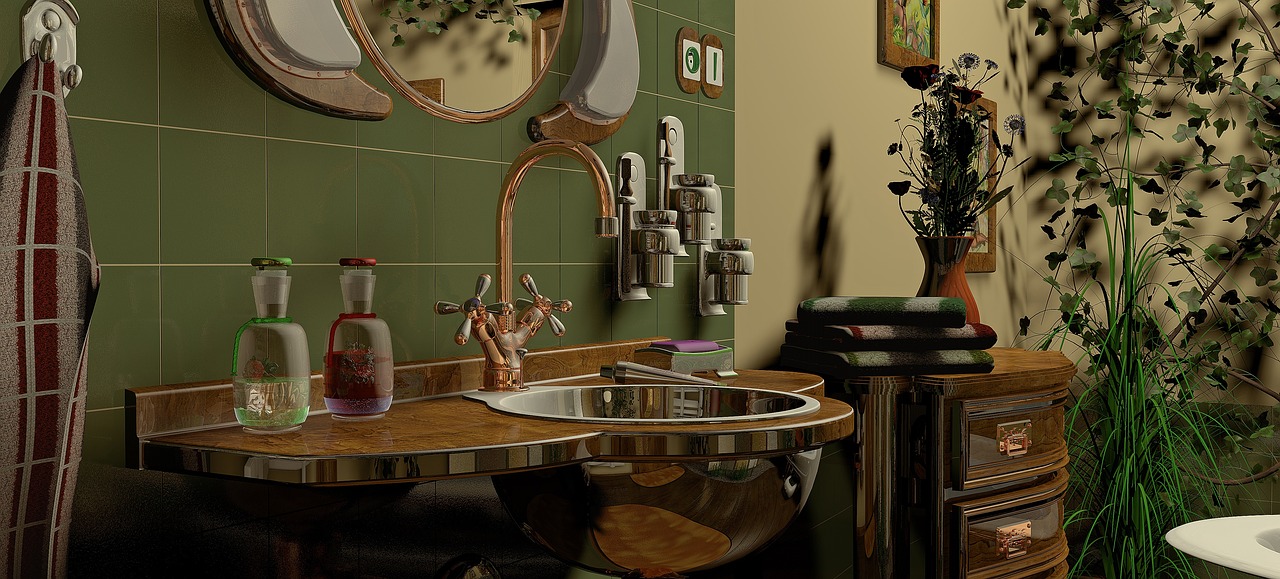
Choosing Safe Bath Toys
When it comes to bath time, choosing the right toys can make all the difference in turning a mundane routine into a fun, engaging experience for your little ones. However, not all bath toys are created equal. Safety should be your top priority, as many toys can pose risks if they're not designed with children in mind. So, what should you look for in safe bath toys? First and foremost, consider the materials used in the toys. Opt for non-toxic, BPA-free plastics that are specifically labeled as safe for children. Avoid toys that have small parts, as they can be choking hazards for younger kids.
Another crucial factor is the shape and design of the toys. Smooth edges and rounded shapes are essential to prevent any accidental injuries during play. Additionally, consider the ability of the toys to float. Floating toys can encourage imaginative play, but ensure they are also easy to clean and dry to prevent mold and mildew buildup. Toys that can trap water are often breeding grounds for bacteria, which can lead to health issues. Look for bath toys that are designed to drain easily and dry quickly.
To help you navigate the world of bath toys, here’s a quick checklist of features to look for:
- Material: Non-toxic, BPA-free plastic
- Design: Smooth edges and no small parts
- Drainage: Toys that easily drain and dry
- Age Appropriateness: Suitable for your child's age group
Lastly, consider the educational aspect of bath toys. Some toys can help your child learn while they play. For instance, toys that encourage counting or color recognition can be both fun and beneficial for their development. Remember, safety and fun can go hand in hand, so choose wisely!
1. What materials should I avoid when choosing bath toys?
Avoid toys made from PVC or those that do not specify they are BPA-free, as these materials can be harmful to children.
2. How can I clean bath toys to ensure they're safe?
Regularly clean bath toys with a mixture of vinegar and water to prevent mold and mildew. Make sure to let them dry completely before storing.
3. Are there any specific brands known for safe bath toys?
Brands that focus on eco-friendly and non-toxic materials, like Green Toys or Munchkin, are often recommended for their safety standards.
4. How do I know if a bath toy is age-appropriate?
Check the packaging for age recommendations and look for toys without small parts for younger children.
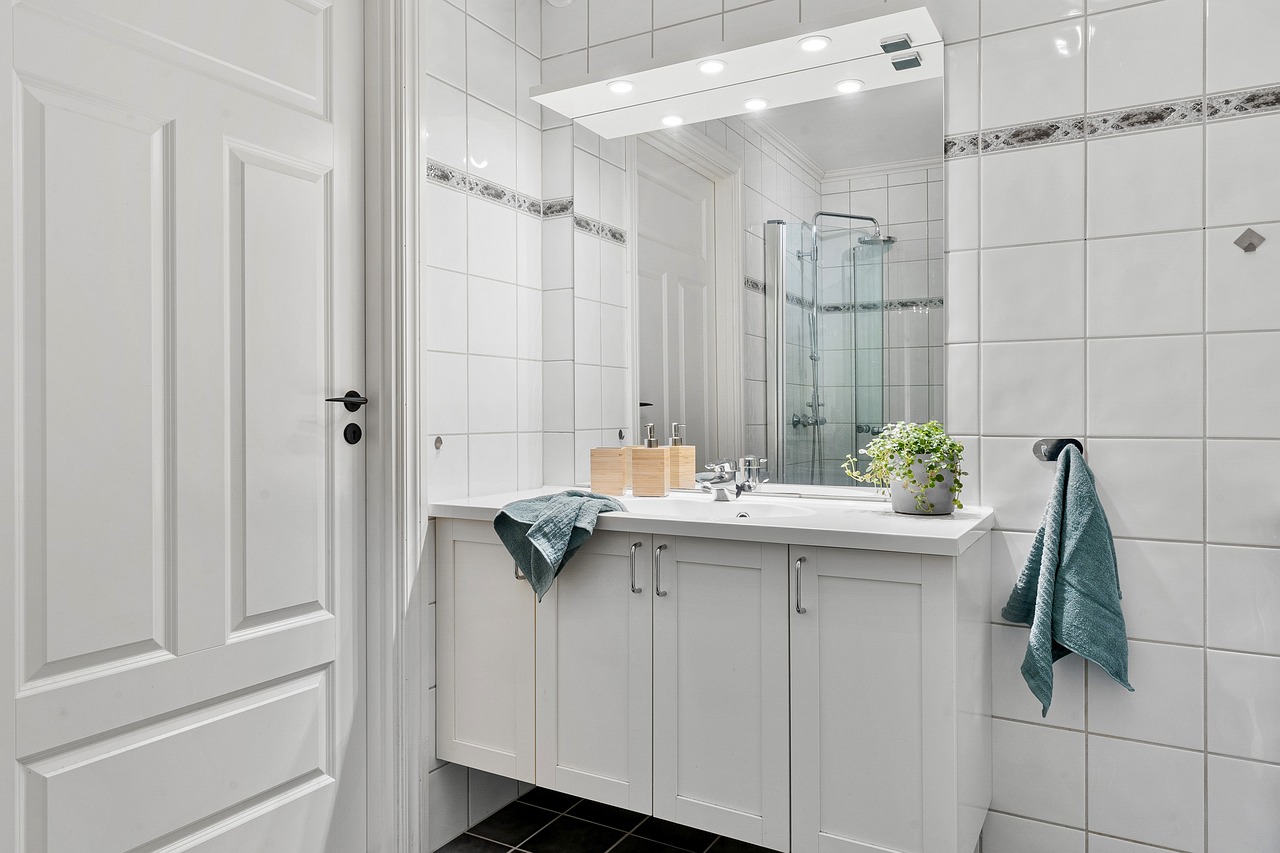
Using Shower Mats and Grab Bars
When it comes to ensuring a safe bathing experience for children, shower mats and grab bars are two essential components that can significantly reduce the risk of slips and falls. Imagine a child, full of energy and excitement, stepping into a wet shower—this is where safety measures become paramount. Shower mats provide a non-slip surface that helps to keep little feet firmly planted, while grab bars offer a sturdy handhold for children to steady themselves.
Shower mats come in various styles and materials, each designed to enhance grip and comfort. When selecting a shower mat, look for options that feature a textured surface and are made from materials like rubber or vinyl, which provide excellent traction even when wet. It's also important to ensure that the mat is large enough to cover the entire shower area, as this maximizes safety and minimizes the chances of slipping. For instance, a mat that extends from the entrance of the shower to the far end can help create a secure path for children.
On the other hand, grab bars are often overlooked but can be a game-changer in a child's bathing routine. These bars, which can be installed on the shower walls, provide a reliable support system for children who may need assistance getting in and out of the shower. When choosing grab bars, opt for those that are made from sturdy materials, such as stainless steel, and ensure they are securely anchored to the wall. The placement of grab bars is also crucial; they should be positioned at a height that is easily reachable for children, allowing them to grab on when needed.
To further enhance safety, consider the following tips:
- Ensure that the shower mat is cleaned regularly to prevent mold and mildew buildup, which can create additional hazards.
- Check the grab bars frequently to ensure they remain securely fastened, as wear and tear can compromise their effectiveness.
- Involve your children in the selection process of shower mats and grab bars. This not only makes them feel empowered but also helps them understand the importance of using these safety features.
In conclusion, using shower mats and grab bars is a proactive step towards creating a safer bathing environment for children. By investing in these safety measures, you not only protect your little ones from potential accidents but also foster their independence as they learn to navigate their bathing routine confidently. Remember, safety in the bathroom is not just about preventing accidents; it's about creating a nurturing space where children can thrive.
Q: How do I choose the right shower mat for my child?
A: Look for a mat that is made from non-slip materials like rubber or vinyl, has a textured surface for better grip, and is large enough to cover the shower area adequately.
Q: Where should I install grab bars in the shower?
A: Grab bars should be installed at a height that is easily reachable for children, typically around 24-30 inches from the floor. It's also advisable to place them near the entrance and within the shower area for maximum support.
Q: How often should I clean shower mats?
A: To prevent mold and mildew, it's best to clean shower mats at least once a week. Regular cleaning will help maintain their effectiveness and prolong their lifespan.
Q: Can grab bars support the weight of an adult?
A: Yes, when properly installed, grab bars can support the weight of an adult. However, make sure to choose bars that are rated for the appropriate weight capacity and are securely anchored to the wall.
Frequently Asked Questions
- What are the common bathroom hazards for children?
Common bathroom hazards include slips on wet surfaces, burns from hot water, and access to toxic substances like cleaning products. It's essential to identify these risks to create a safer environment for your little ones.
- How can I prevent slips in the bathroom?
Installing non-slip mats is a great way to prevent slips. Look for mats made from materials like rubber or vinyl, which provide better grip and comfort. Make sure to place them strategically in areas that tend to get wet.
- What types of faucet covers are available?
Faucet covers come in various designs, such as silicone or foam types, which help prevent burns. They are easy to install and can significantly reduce the risk of injury when kids are using the sink.
- How do I childproof bathroom cabinets?
Securing bathroom cabinets is crucial. You can use childproof locks or latches to keep hazardous items out of reach. Additionally, consider organizing supplies so that anything dangerous is stored out of sight.
- What is the best way to educate children about bathroom safety?
Teaching children about bathroom safety can be fun! Use visual aids like charts and pictures to reinforce safety rules. Establishing a routine helps them remember what to do and what to avoid.
- How can I monitor water temperature for safe bathing?
Setting your water heater to a safe temperature, usually around 120°F (49°C), is essential. You can also use bath thermometers to check the water before your child gets in, ensuring it's not too hot.
- What are anti-scald devices, and do I need them?
Anti-scald devices are installed on faucets and showerheads to regulate water temperature and prevent burns. They are highly recommended for households with young children to enhance safety during bath time.
- How can I create a safe bathing environment?
Creating a safe bathing environment involves choosing safe bath toys, using shower mats, and installing grab bars. These features help prevent accidents and make bath time more enjoyable for children.
- What should I consider when choosing bath toys?
When selecting bath toys, look for options that are free of small parts, made of non-toxic materials, and easy to clean. Avoid toys that can trap water inside, as they can harbor mold and bacteria.


